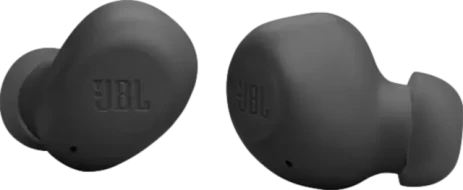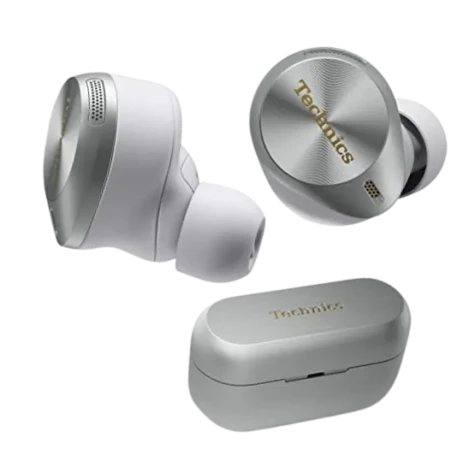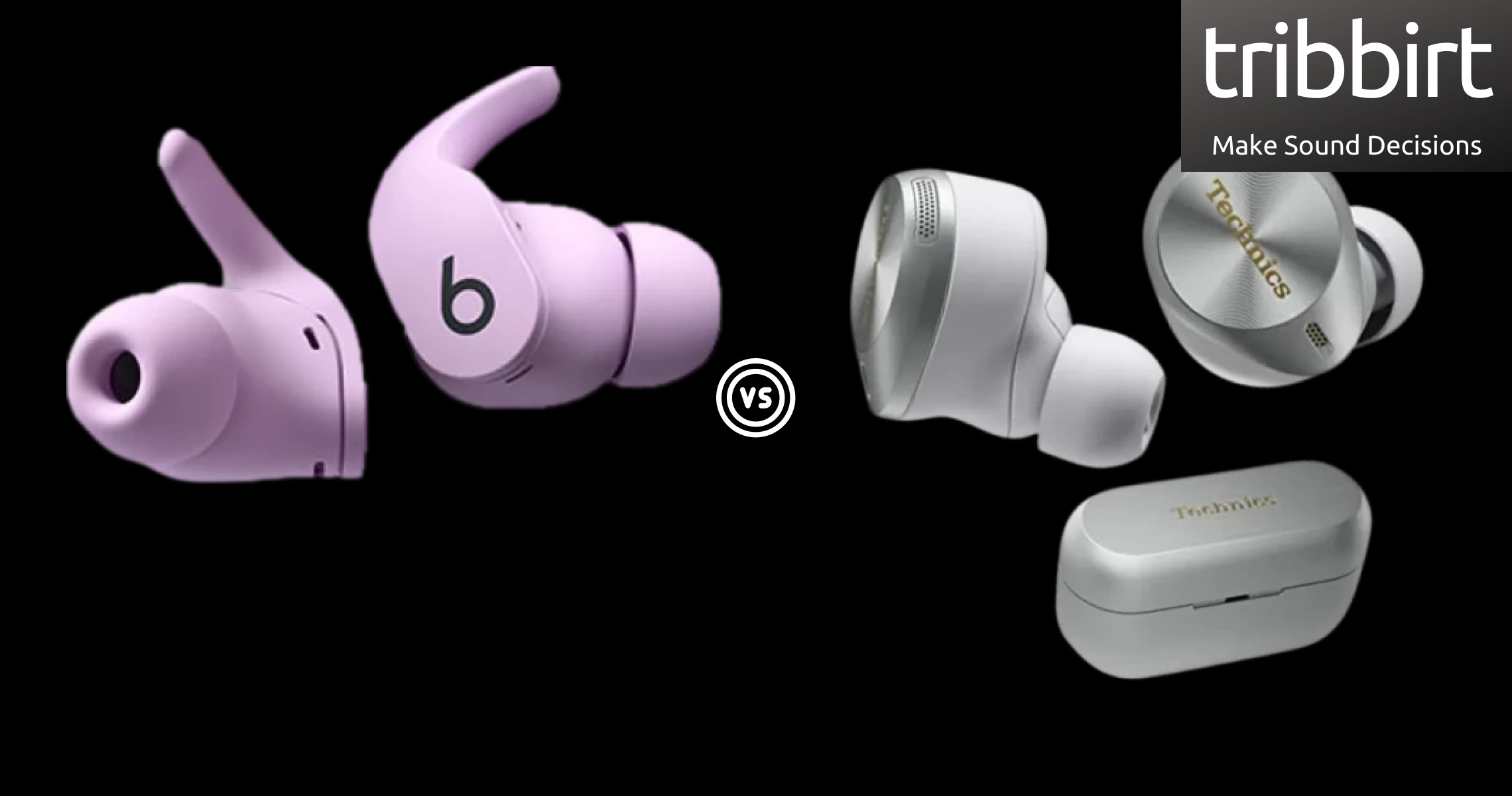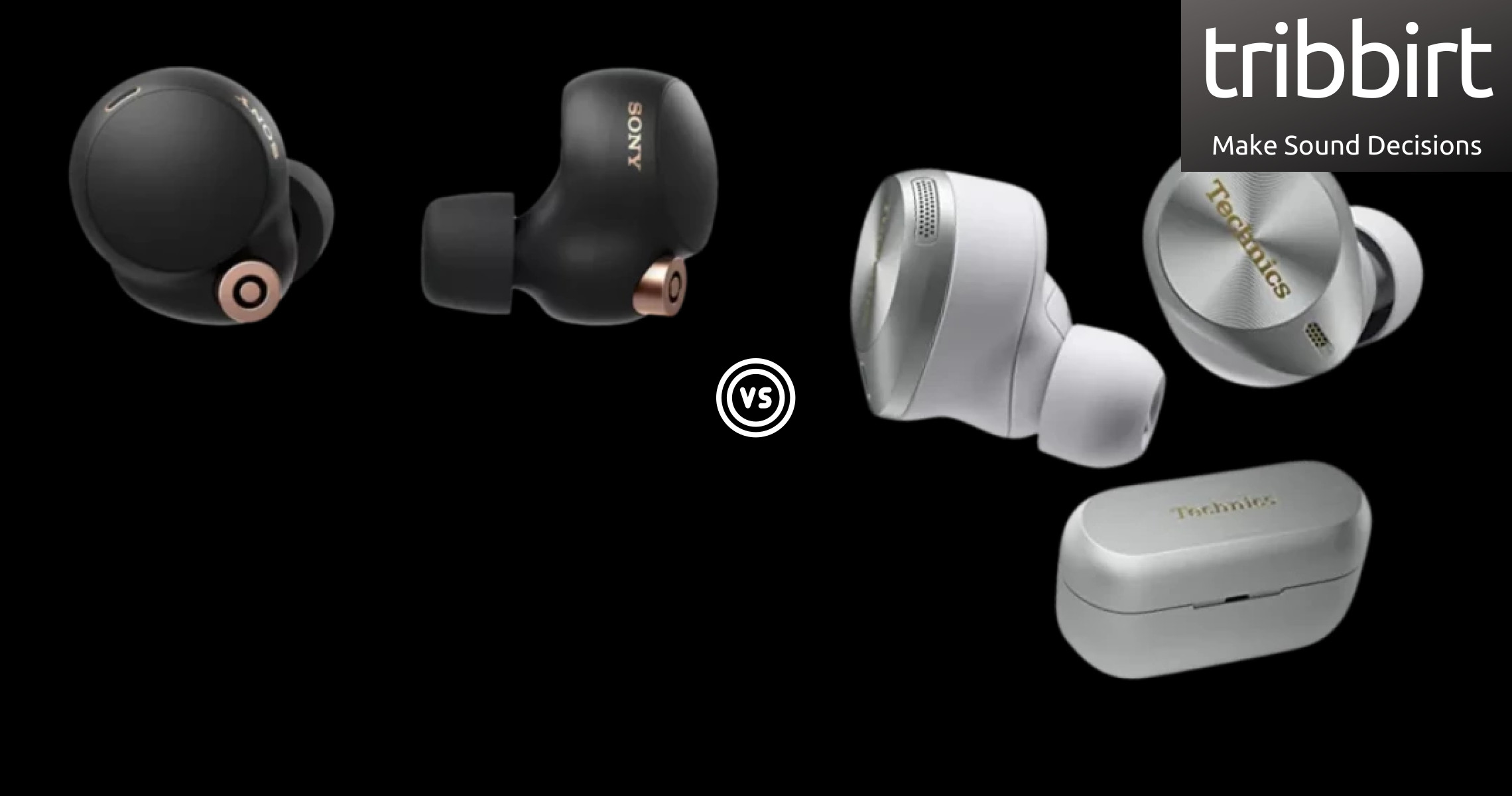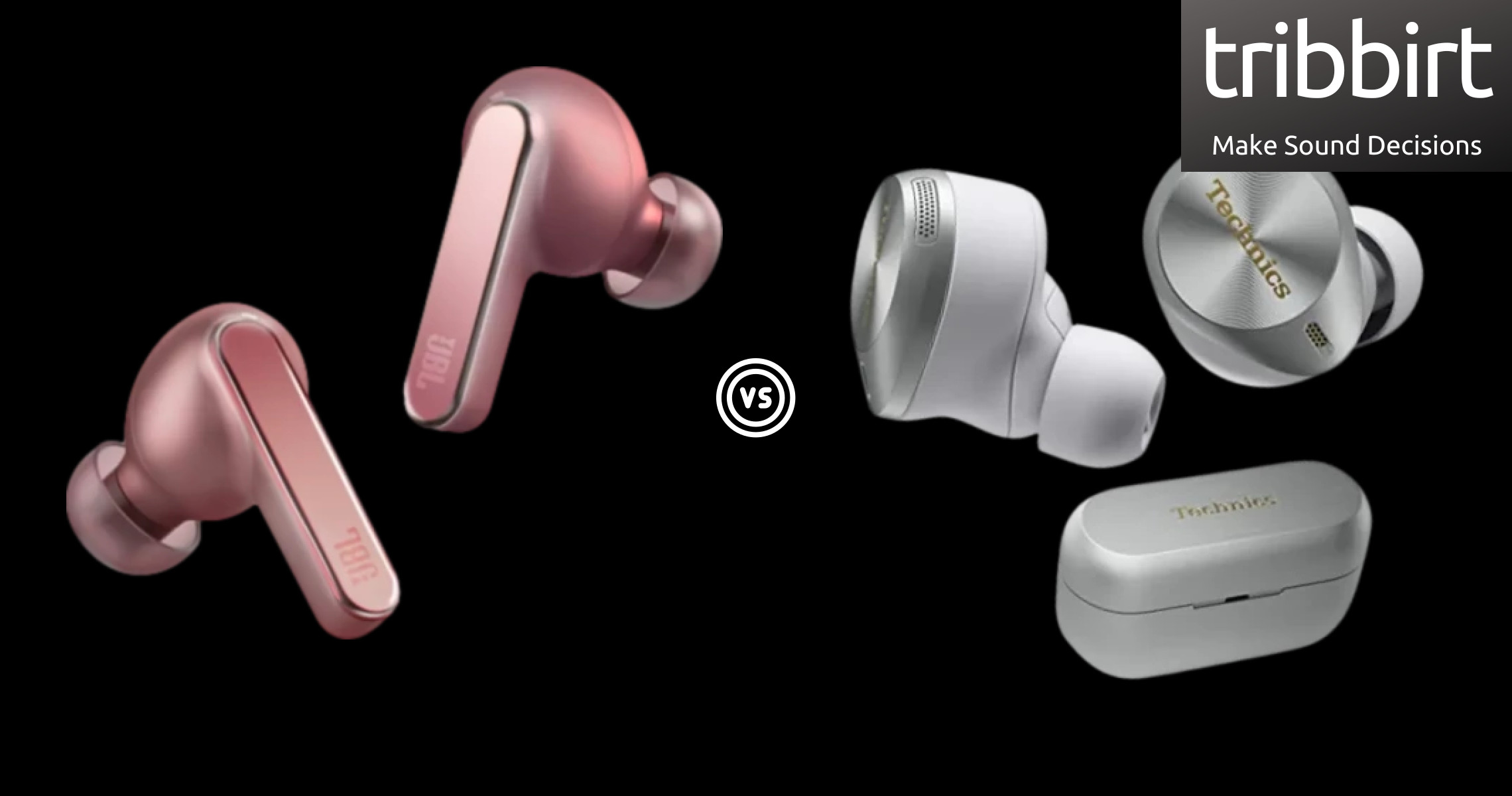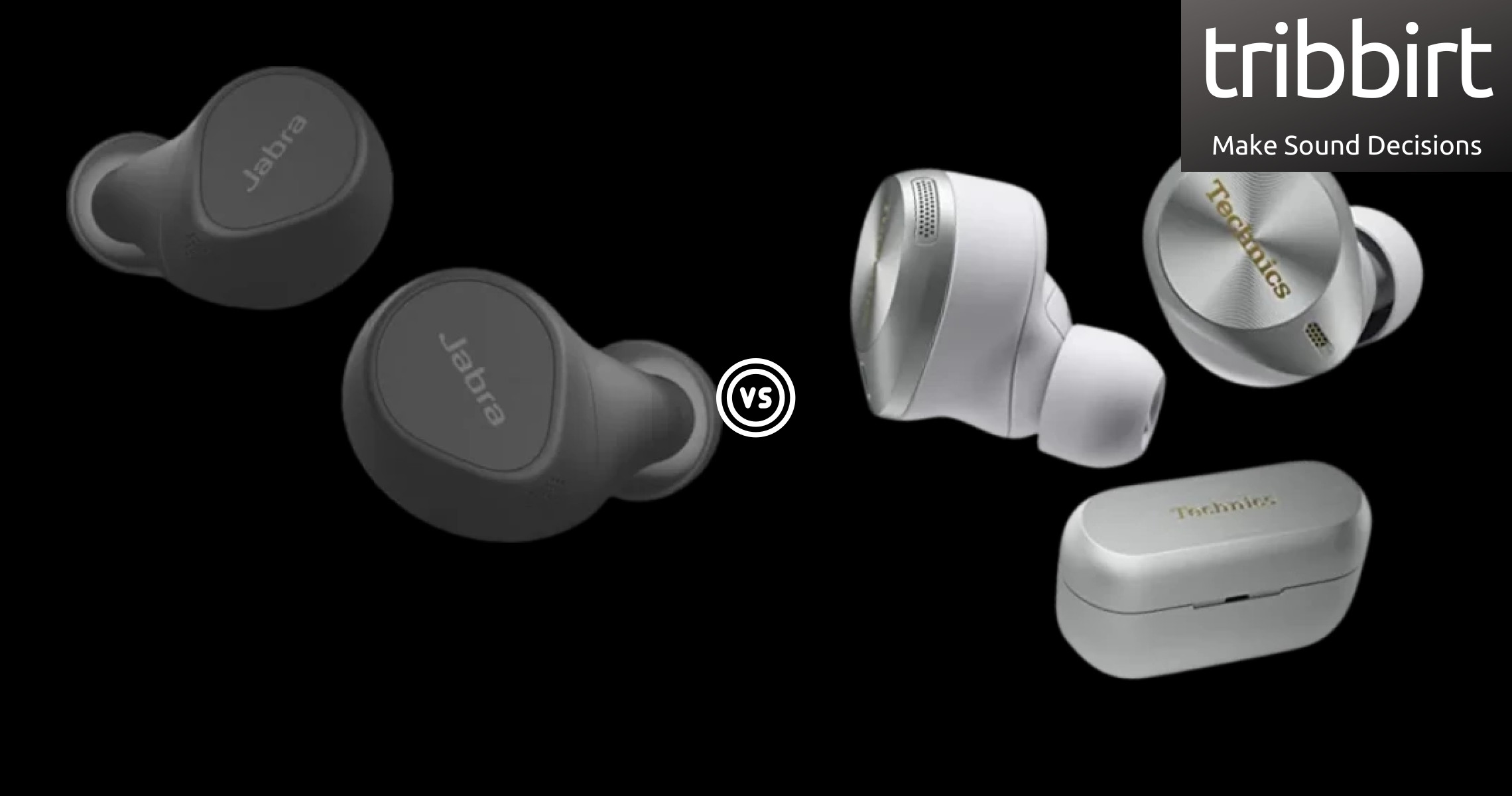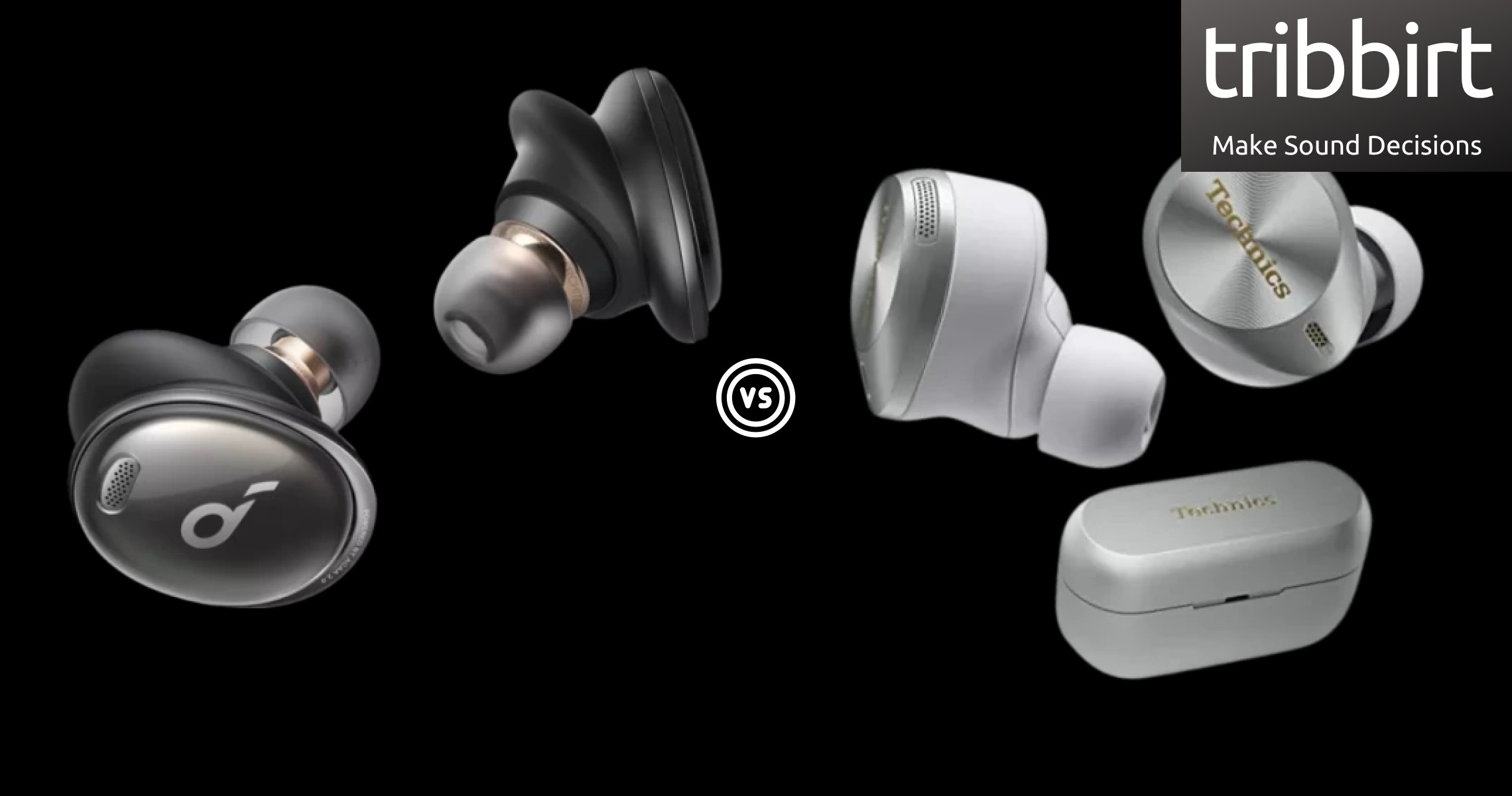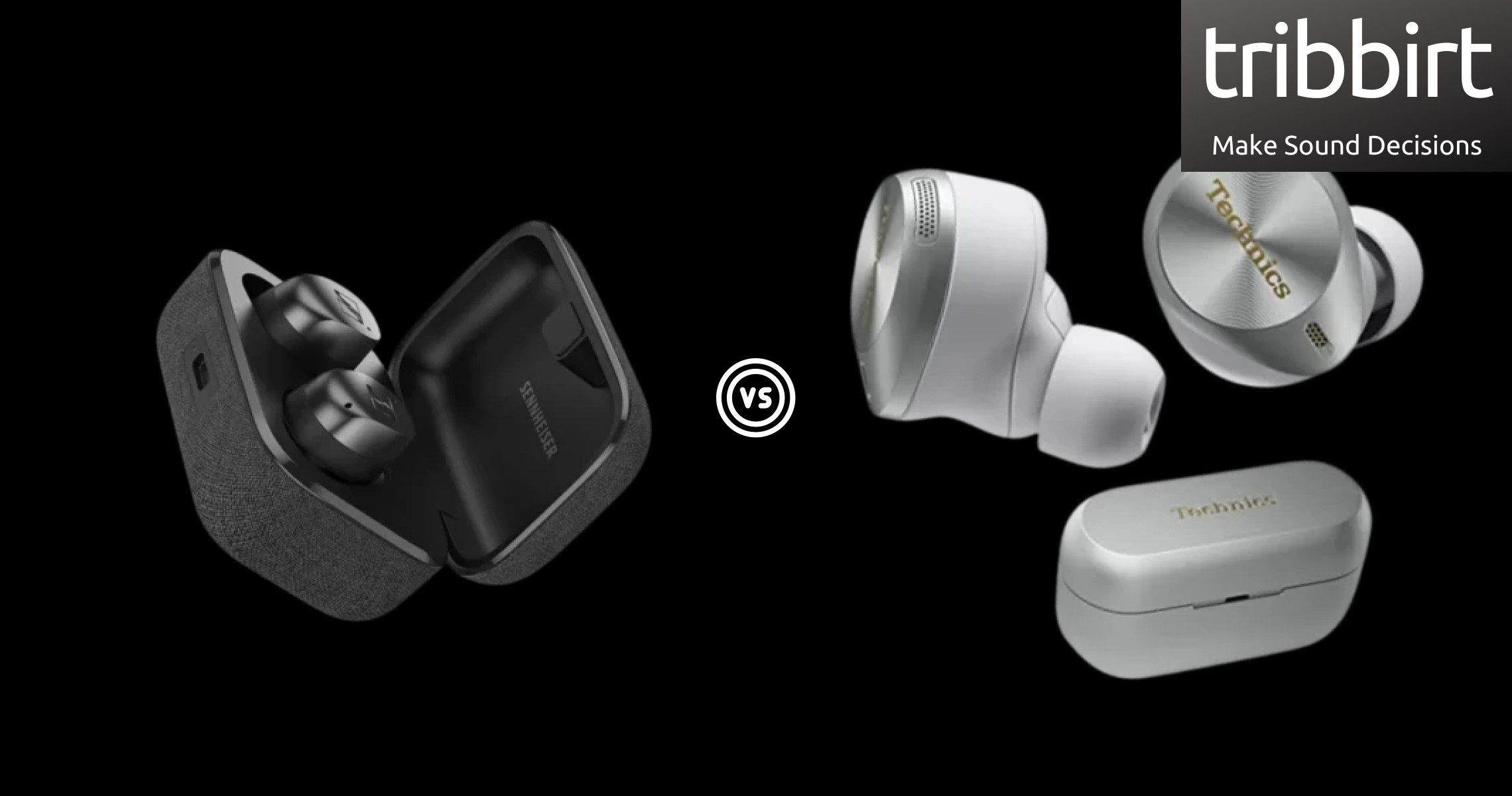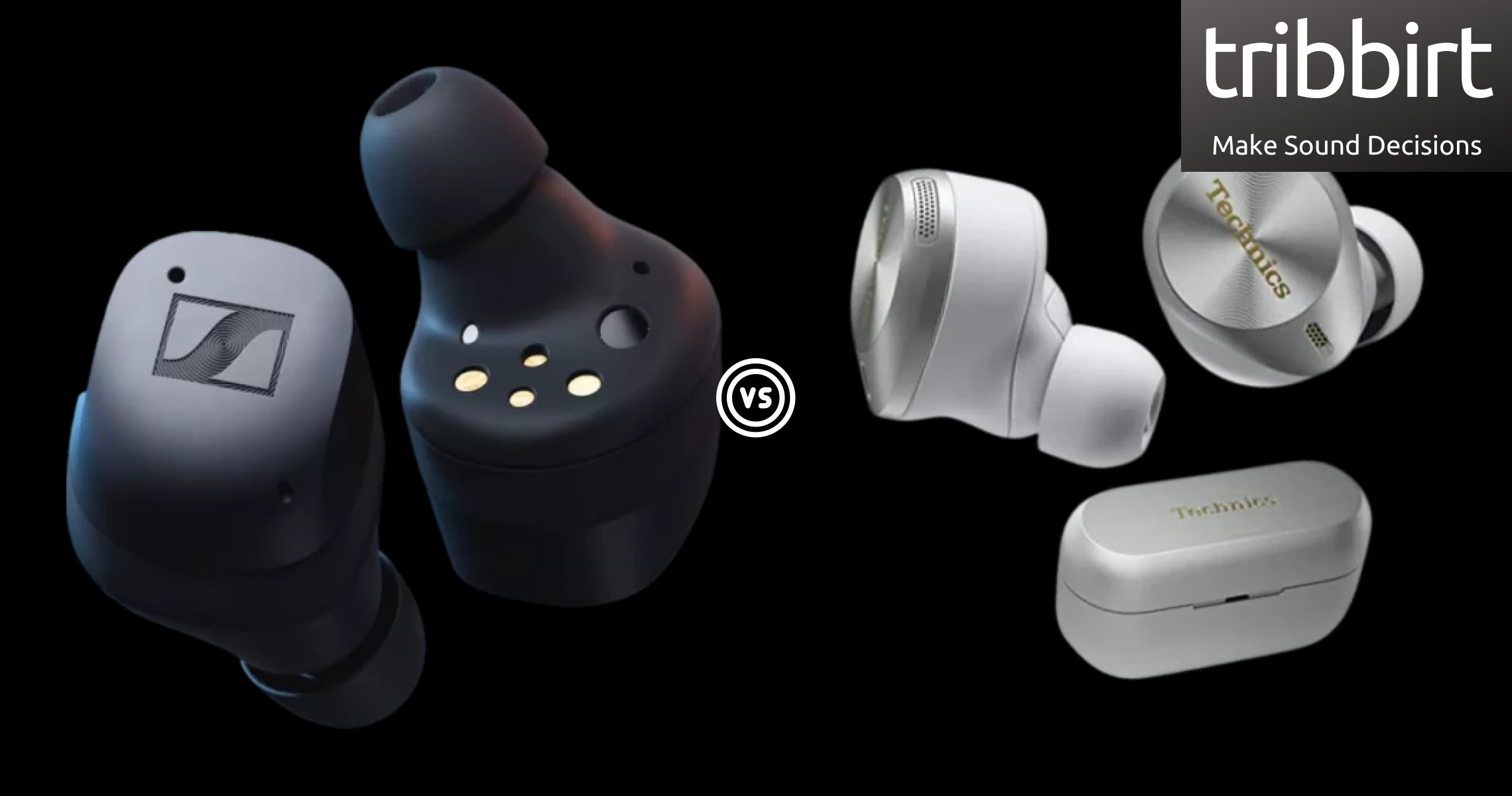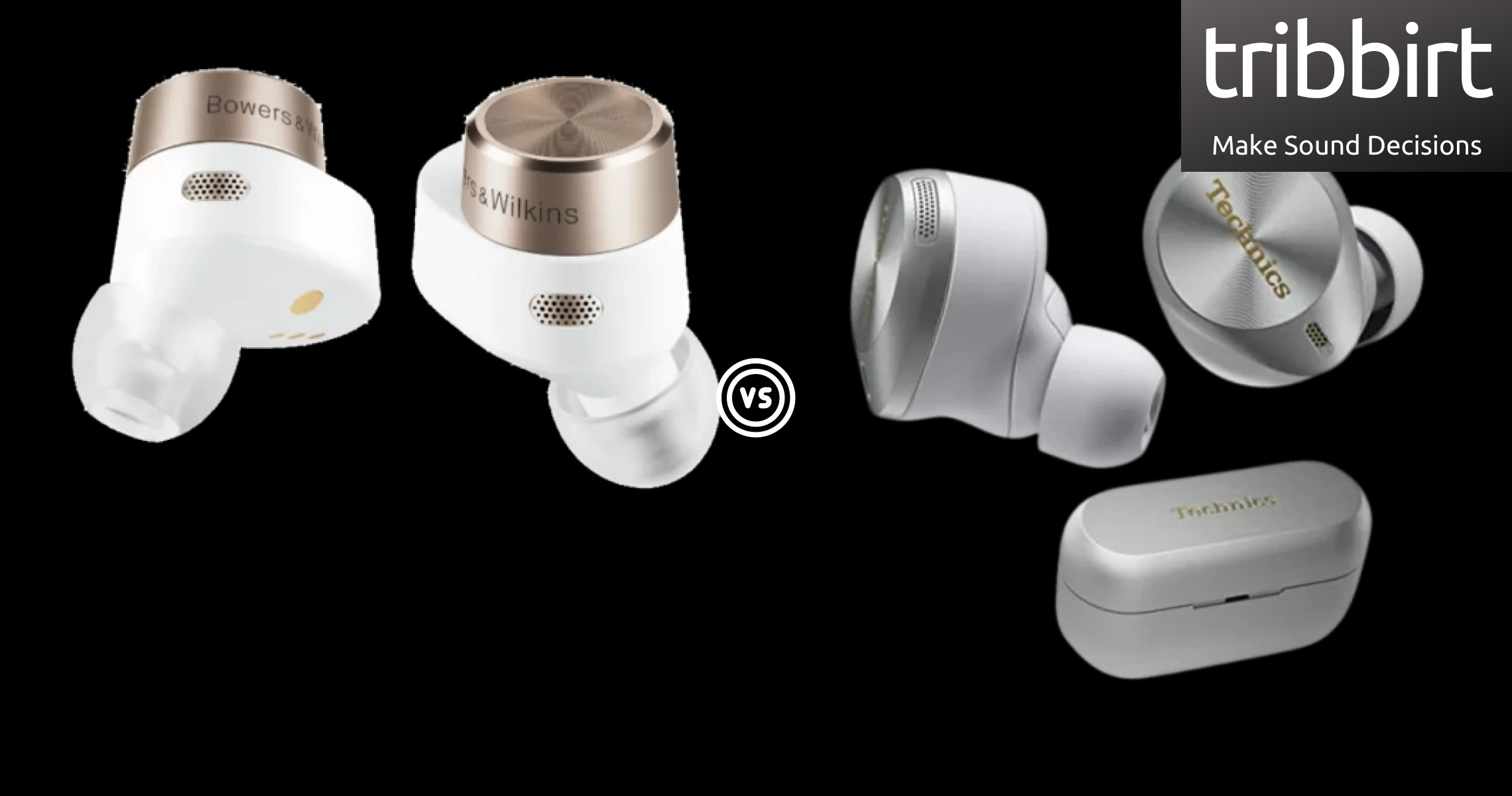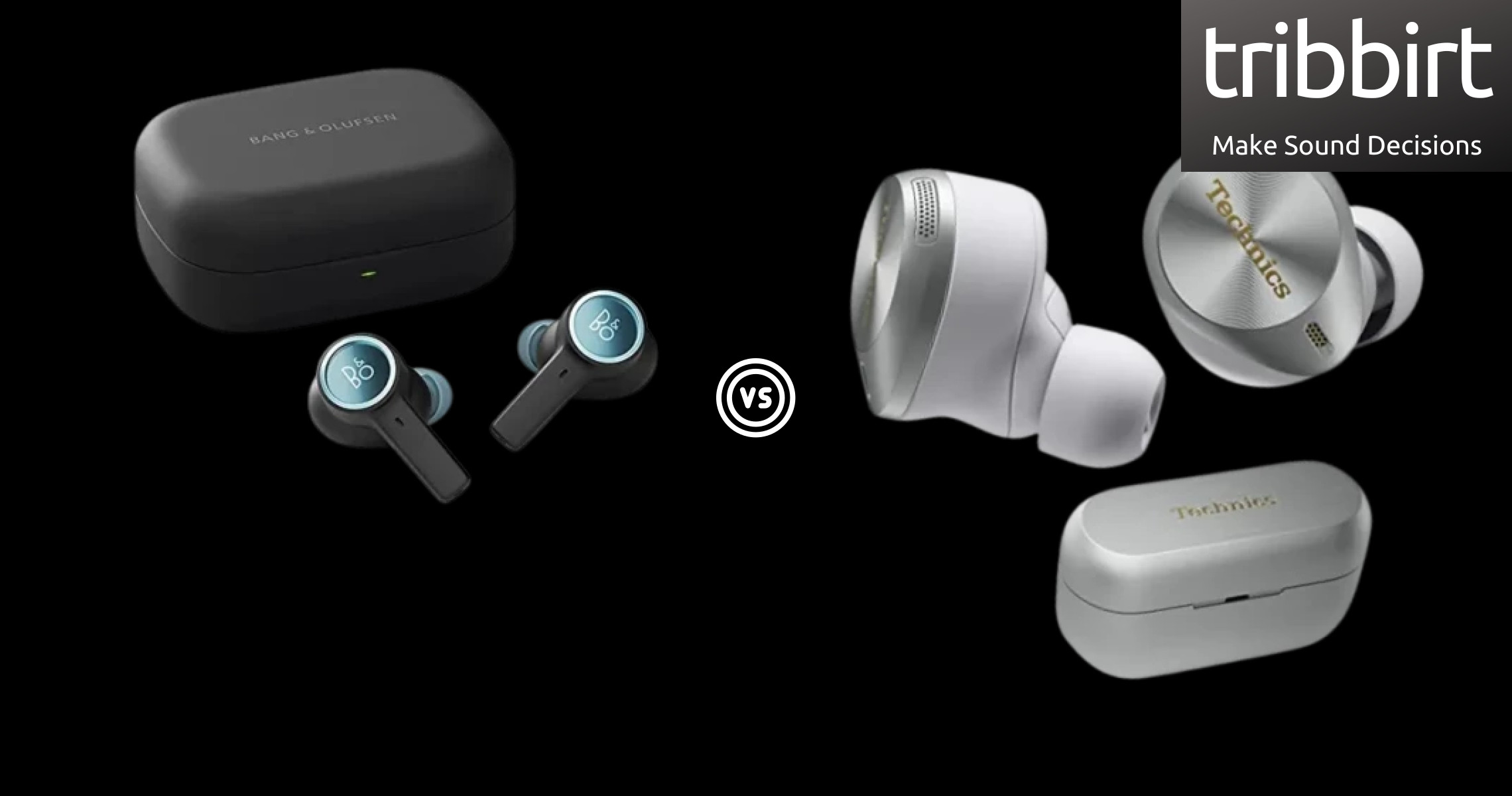IP ratings is the rating of protection given by an enclosure, against dust and liquids. In the format of IPXX, 'X' represents a number The first value of the IP rating refers to protection against solids say dust, followed by the one that refers to protection against liquids (sweat).
Having a value of IPX4, the Technics EAH AZ80's rating is read as, the first number of X denotes that no data available to specify a protection rating, and the second value of 4 means that they can withstand low pressure spray similar to that of a shower head when tilted at 180° for 10 minutes. In comparison to the Technics EAH AZ80, JBL Wave Buds have a rating of IP54 meaning that
ingress of dust is not totally prevented but dust does not enter in harmful quantities to interfere with the correct operation or impair safety
and that of liquids is that,
they both have the same rating against liquids
The Technics EAH AZ80 have a weight of 14g . We consider a lower weight best because lighter devices are more comfortable to move with.
The JBL Wave Buds, at 9g
are lighter than the Technics EAH AZ80 by -5g
True wireless devices have no cables connecting any part of the device together, Technics EAH AZ80 are true wireless for this case since they have no cables. This is a key difference as some wireless earbuds have wires connecting the two earbuds .
JBL Wave Buds also is true wireless because it has no wires linking the 2 earbuds .
Technics EAH AZ80 have sweat resistance
JBL Wave Buds's resistance to sweat makes both devices good for use during long-distance running, marathons, cardio sweat workouts , etc
Technics EAH AZ80 have stereo speakers, devices with stereo speakers deliver sound from independent channels on both left and right sides, creating a richer sound and a better listening experience. Both JBL Wave Buds and Technics EAH AZ80 have stereo speakers
Active noise cancellation utilises more advanced technology to actively cancel noise.
ANC works when, it studies the sound pattern of incoming noise and then inverts the soundwaves to cancel it out. In simple terms, it's like having +1 (sound from your surrounding) and producing -1 (counter sound by the device) giving 0 resulting in a reduced level of noise.
The Technics EAH AZ80 have ANC allowing you to listen at lower volume levels, good for your ears as you don't need to crank up the device volume to outcompete background noise.
The JBL Wave Buds too have ANC which makes either of the earbuds ideal for plane rides and rush hour travels. The Technics EAH AZ80 and JBL Wave Buds work with different noise cancellation modes, pick the mode that suits your travel or that enhances your relaxation time. The Technics EAH AZ80 stay tightly in place, creating a sound seal that reduces background noise well as preventing the earbuds voice audio from leaking out at the same.
Both JBL Wave Buds, and Technics EAH AZ80 have passive noise reduction this implies that both reduce ambient noise instead of actively using ANC to cancel it out. The Technics EAH AZ80 driver unit is 10mm in diameter, bigger drivers are more powerful, therefor producing better bass. The driver unit is basically a mini speaker that produces sound in the earbuds, the unit size dictates the loudness of the device.
JBL Wave Buds driver unit is 8mm in diameter,
which implies that they have a smaller driver unit than that of Technics EAH AZ80 by 2mm
, many people have a misconception that driver units of a bigger size automatically produce better sound quality.
However, large drivers usually have difficulty producing high frequencies so yeah, larger drivers can generate louder sound, but this does not mean that they deliver better quality sound. The Technics EAH AZ80's lowest frequency is at 20Hz, low-frequency response inidcates how well a particular audio component generates low audible frequencies and if it alters the signal while at it.
JBL Wave Buds's lowest frequency is at 20Hz, this means that
both devices make sound with equal bass
The Technics EAH AZ80's highest frequency is at 40,000Hz, high-frequency response shows how well a particular audio component makes high human frequencies and if it makes any adjustments to the signal while at it. JBL Wave Buds's highest frequency is at 20,000Hz, this means that
Technics EAH AZ80 can generate a clearer and crispier treble than the JBL Wave Buds
The Technics EAH AZ80's battery life is 7.5 hours, these last longer than 5 hours of listening which is considered average for a single charge. A device's battery life is usually given by the manufacturer, and with more battery hours, you get to use it for longer and requires fewer chargings.
JBL Wave Buds's battery life is
more than that of Technics EAH AZ80 by 0.5 hours
. Every time you recharge your device, they get a little less playing time. The effect is barely noticeable at first, but over time, your wireless earbuds will no longer play for long like they used to. The battery life of the charging case is given by the manufacturer, and Technics EAH AZ80's case has a charge of 17.5 hours.
A charging case with more battery hours enables you to recharge your earbuds on the go multiple times before recharging the case itself. JBL Wave Buds's charging case has a battery life of 24 hours,
more than that of Technics EAH AZ80 by 6.5 hours
It takes 2 hours to fully charge the Technics EAH AZ80's battery. It is recommended to charge fully the battery before using the earbuds for the first time.
JBL Wave Buds takes 2 hours to fully charge the battery,
equal to that of the Technics EAH AZ80
The Technics EAH AZ80, the device supports wireless charging. To charge the earbuds, you simply put down on a supported charging pad. Technics EAH AZ80 have a battery level indicator, an indicator notifies you when the earbuds has a low battery.
The battery indicator lights show the charging state of your device and charging case. JBL Wave Buds too have a battery level indicator, charging indicators allow you determine the charging state of your earbuds, whether fully charged, or having a low battery. The Technics EAH AZ80 have USB TYPE-C, an industry-standard connector for transmitting both data and power in a single cable.
JBL Wave Buds too use USB TYPE-C. This USB-C plug is part and parcel of most current electronics. The Technics EAH AZ80 have Bluetooth version of 5.3, Bluetooth is a wireless technology standard that enables data movement between devices placed in close proximity, using short-wavelength, ultra-high frequency radio waves.
JBL Wave Buds has a Bluetooth version of 5.2,
older than that of Technics EAH AZ80
. Newer versions provide faster data transfers. Technics EAH AZ80 have a 10meters distance to connect via Bluetooth. JBL Wave Buds have a maximum range of 10meters,
equal to that of the Technics EAH AZ80
Technics EAH AZ80 support AAC, a codec used for Bluetooth audio.
It supports 24-bit audio at 250kbps. Because it uses psychoacoustic modeling, it provides better results than other codecs at the same bit rate.
Being the highest quality codec that any Bluetooth-supporting Apple product supports, the Technics EAH AZ80 will work well with your MacBook.
If you intend on using these with Android , ensure that they also support aptX HD, LDAC, or LHDC as well. The JBL Wave Buds support AAC as well. Designed to be the successor of the MP3 format, AAC generally achieves higher sound quality than MP3 encoders at the same bit rate.
Technics EAH AZ80 support LDAC, a codec developed by Sony
which allows streaming high-resolution audio over Bluetooth connections at up to 990 kbps at 32 bit/96 kHz. It is capable of a very high bitrate of 990kbps, providing high-resolution audio. The Technics EAH AZ80 have 8 microphones.
While the JBL Wave Buds microphones are 2,
less than that of Technics EAH AZ80 by 6
. More microphones result in better sound quality and enable the device to filter out background sounds. The Technics EAH AZ80 have a noise-canceling type of microphone, these microphones are designed to reduce noise from the earbuds' sound. The JBL Wave Buds too use a noise-canceling type of microphone.
Especially useful in noisy areas. The Technics EAH AZ80 support ambient sound mode, which uses microphones to channel ambient noises so that they can still be heard even while wearing them
The JBL Wave Buds support ambient sound mode as well, it’s useful when you want to listen to music while being aware of what’s happening around you, for example when you’re having a jog but would still want to hear traffic. The Technics EAH AZ80 have in/on-ear detection, the sensors in the earbuds can detect when they are removed from your ears so that the music is paused.
JBL Wave Buds too support in/on-ear detection, automatically pauses your music, or audiobook when you remove earbuds from your ears saving battery life. Technics EAH AZ80 support fast charging. Commonly, technologies like Qualcomm’s Quick Charge, are used to lower the amount of time it takes to fully charge a device.
Also the JBL Wave Buds support fast charging. This kind is similar to regular charging, just that the battery fills up much faster. Say, with Quick Charge 3.0, the battery can be charged to 50% in thirty minutes.
The Technics EAH AZ80 have a multipoint of 3 connections, this feature allows you connect to more than one Bluetooth device and switch between them. Say, you can seemlessly switch calls from one device to another without manually disconnect and reconnect. The JBL Wave Buds have a multipoint count of 2,
less than that of Technics EAH AZ80 by 1 only
. Bluetooth multipoint comes in handy when you can be on one call and not miss notifications coming from another device.
Technics EAH AZ80 have a mute function, they support the option to mute/unmute a conversation directly from the earbuds. The JBL Wave Buds also have this function. It means that you can turn off the device's microphone, but you can still hear the other party talk.
With the Technics EAH AZ80, so you can easily access the volume control, pause, play, mute, etc whichever features are supported on the device. The JBL Wave Buds too have a control panel on them. Technics EAH AZ80 have a warranty period of 1 Years, the period of time that warrant free repair and adjustment services in case of a malfunction occurring under normal use that has followed instruction manuals.
The Technics EAH AZ80 have voice prompts. With voice prompts, you receive information via audio messages, say if there is a problem with the connection. The JBL Wave Buds too support voice prompts .i.e the earbuds will notify you when the battery is running low, and it's time to recharge them.
The Technics EAH AZ80 come with a special pouch. Carrying earphones without a case, or putting them inside your bag without a casing may easily put them at risk of getting damaged. JBL Wave Buds also have a case included, which is useful for safe transportation.
